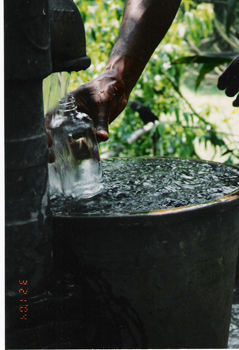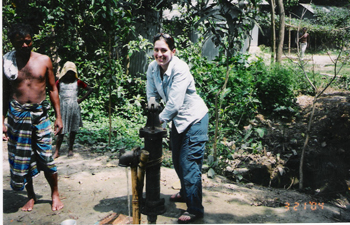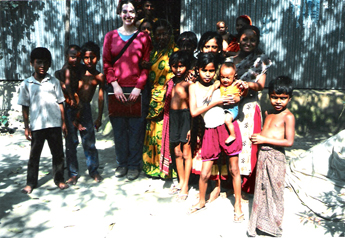
 |
Bangladesh Well |
Objective – To assess household responses to arsenic mitigation that included not only public education but also testing of private wells for arsenic, labeling wells with arsenic levels, and provision of new community wells.
Methods – Household data were collected through surveys over a period of 4 months in a 25 m2 area of Araihazar, Bangladesh (population 70,000). Interviewers used handheld computers coupled to GPS receivers to locate 6,510 previously tested wells and record household responses. Questions gauged which wells are used for drinking and cooking water, actual and perceived well status, exposure to well status information, education level, and community involvement.
Findings – Respondents at 65% of the 3,410 unsafe wells surveyed said they changed drinking water sources (15% with safe wells switched), confirming earlier work. Well status was the most significant factor impacting behavior, although distance to safe source was also important. Of the respondents with unsafe wells that switched, 57% utilized a nearby private well, 16% used a community well installed by a research team, and 18% dug a new well. The remaining respondents with unsafe wells were drinking from new or untested wells.
Conclusions – Contrary to expectations, expressed before the Columbia team’s mitigation efforts, over half of respondents with unsafe wells use a nearby safe well, overcoming socioeconomic barriers to do so. Future mitigation should focus on reliable local testing services and labeling of wells since well status was the main impetus for changing from an unsafe well. Willingness to use community and private wells and the abundance of newly dug wells indicate that effective mitigation could also involve installing community wells to the depth of local aquifers as an example of those digging new private wells. Reliable testing services and the resulting installation of safe wells probably offer the most effective ways of reducing arsenic exposure in Bangladesh.
 |
 |
Alisa's visits one of the many wells in the study area of Bangaldesh. |
Alisa surrounded by children from the village where she stayed. |
Go to Science Research Projects.
Go to Learning Objectives of Research Project.
Return to E&ESJ home page.
Last updated: 19 January 2006, MKT.